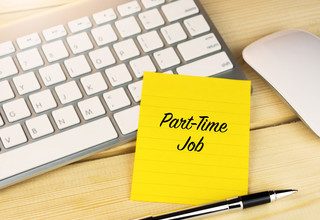Millennials are notorious for their short attention spans. A recent study by Microsoft reveals that the average attention span of a human brain is shorter than that of a goldfish. Information was in the years before the internet, confined to the folds of a newspaper. Digital lifestyles have steadily diminished the attention spans of people. Especially millennials. News across different corners of the globe are available under a single glass pane.Wherever you turn there are young teens arguing, over mugs of coffee, on government policies and current affairs. But disconcertingly enough very few of them can remember what they read just a few hours ago. Blame it on breaking news, screaming new anchors, colorful billboards, and controversial FaceBook posts. There are gazillion things competing for attention and to be heard above this noise it is essential for teachers to teach students how to read effectively.
Are your students caught in an information vortex?
In all the frenzy of FB shares and argumentative tweets, books, author names and profound thoughts are quickly lost.
Which brings us to the biggest dilemma that teachers face. How do you make these agile minds that are glued to their smartphones to focus? To remember that equation? That beautiful sonnet? Bring them back to class from the information vortex they are caught up in through these simple and effective methods.
Add more horsepower to the reading process
Reading is often regarded as a passive process. You let the book, the characters in it, the ebbs and flows of the plot, grow over you. Until it changes your perspective, makes you a better person or at the very least improves your vocabulary. But reading can longer be a passive, abstract process when you are dealing with millennials with super-short attention spans. The answer lies in making reading an active, passionate, energetic and vibrant process.
So how do make reading an active process? How do make those playful brain cells actively engage with what they read? These 3 minor changes in the reading pattern of your students will make them better learners.
Little change 1: Commonplace book – The little book every reader should maintain
Encourage students to have a commonplace book which acts as a thread that runs through myriad thoughts, ideas, and quotes. It serves not just as a central repository of information that can be used for future references but help kick in the brain during the passive process of reading. Many great thinkers, writers, and orators have maintained a commonplace book. Thomas Jefferson, Montaigne, Bill Gates, Napolean are a few of the great minds who’ve kept a commonplace book to compile knowledge.
This quote by famous philosopher and Statesman Seneca sums it up, ““We should hunt out the helpful pieces of teaching and the spirited and noble-minded sayings which are capable of immediate sensible application–not so much far-fetched or archaic expressions or extravagant metaphors and figures of speech–and teach them therefore well that words become works.”
Most of the history we all know these days wasn’t consistently recorded by historians or writers. But the bits and scraps of information written by the common man in diaries and pieces of paper.
Drive home the importance of methodically collecting and recording important quotes, stand-out sentences and interesting facts in a commonplace book. At the end of the day, it creates a latticework of information and thoughts that improve knowledge retention.
Little change 2: Reviews: Because opinions are beautiful
What is the first thing your young students do when you take them out for a little treat at a hamburger joint nearby? Write a review about it of course. There is this constant obsession with today’s youth to review and voice their opinion, whether it is hamburgers or movies. Use their interest in reviewing to write reviews for what they’ve read.
It is one of the most popular techniques to increase context and learning. Because reading alone is not enough. Reviewing to a large extent helps in contextualizing the knowledge gained and also helps students to embed information in their minds.
Rewards for well-written reviews ensure your students invest energy and effort to write well-researched ones. Also, encourage your students to post their reviews on popular platforms like Amazon or GoodReads.
Little change 3: Apps and tools – Millennials can’t live without them
“I just sit in my room and read all day”. Nope, these are not the words of a whimsical poet with his head in the clouds but of one of the world’s most successful investors, Warren Buffet. Well, to make your students read and learn more introduce them to fun reading apps. A reading app? I balked the first time I heard of one as well. But they are surprisingly useful for busy people or students who struggle to read.
And yes, nothing can make teenagers happier than an online tool that is easy-to-use and has a cool UI. When I speak of reading tools two pop into my mind instantly, Spritz and Blinkist.
Spritz is designed for students who struggle with traditional models of reading. It is a spiffy tool that removes saccade and places words exactly where your mind wants them to be. Textual data is streamed one word at a time to users and each word is placed carefully on the Optimal Recognition Point. ORP is the position where the eye naturally focuses on. The center letter of each word is colored red. It eliminates the time wasted on reading side-to-side or top to bottom. By cutting short the time spent on scrolling and wasted eye movements, Spritz enables readers to enjoy an immersive reading experience.
Are you busy prepping your students for an all-important exam? Is your nervous student down the hall about to give a dissertation? There is help at hand. Blinkist is an app that is available in the App Store and Google Play. Blinkist reads books, extracts the important points, insights or ideas, and presents it to the reader in a condensed and brief summary. These bite-sized informational nuggets fit on a single page and are enormous time-savers.
There are several innovative apps and online tools to help students along their reading journey. Introduce your students to one and I’m pretty sure they’d be grateful for it.
It is the small changes that matter…
Tiny habits learned and developed over time are way more useful than big, disruptive ideas. That is why we may not remember that groundbreaking idea to change the world when we were 13 but never forget how to tie up our shoelaces. These 3 changes in the way your students read and consume information will sure make a definite impact on how they synthesize and parse information.
To add one more quote from my commonplace book that is right beside me as I type, “the journey of a thousand miles begins with one step”- La Tzu. Let the journey of a million words begin with these simple steps.
Now it’s your turn. What’s your secret sauce to help your students read and learn better? We’d love to know about it. Thanks a ton for reading this article. If you enjoyed reading it, it’d be awesome if you could share it out.
Author Bio:
Jasminali – I am an education consultant and co-founder of Course Suggest – A leading education reviews and comparison platform worldwide.













